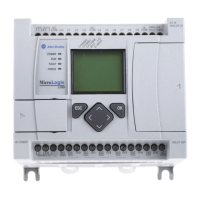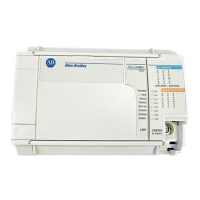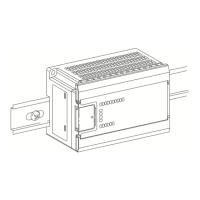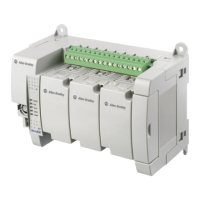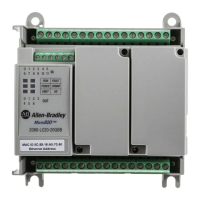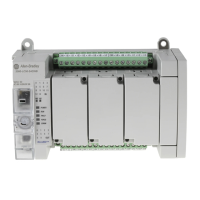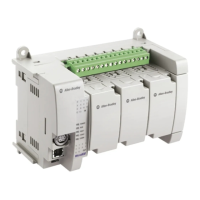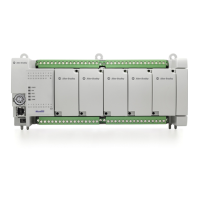Publication 1766-RM001A-EN-P - October 2008
646 Knowledgebase Quick Starts
# 17558 “Quick Start”
User Interrupt Disable
(UID)
The UID instruction can be used as an output instruction to disable
selected user interrupts.
Once a user interrupt is disabled the User Interrupt Enable bit (UIE) for
the selected interrupt will be cleared or reset to a zero (0). This stops the
interrupt from executing.
To re-enable an interrupt the UIE bit must be set to a one (1), or a UIE
instruction must be used.
The following table indicates the types of interrupts disabled by the UID.
To disable interrupt(s) follow these steps.
1. Select which Interrupt(s) to disable from the above table.
2. Locate the decimal value for each Interrupt(s).
3. Add the decimal values together if more then one Interrupt was
selected.
4. Enter the sum into the UID instruction.
For example, to disable EII Event 1 and EII Event 3:
EII Event 1 = 32 EII Event 3 = 04
32 + 04 = 36 (Enter this value in the UID instruction)
Interrupt Element Decimal
Value
Corresponding
Bit
EII - Event Input Interrupt Event 4 16384 bit 14
HSC - High-Speed Counter HSC2 8192 bit 13
EII - Event Input Interrupt Event 5 4096 bit 12
HSC - High-Speed Counter HSC3 2048 bit 11
EII - Event Input Interrupt Event 6 1024 bit 10
HSC - High-Speed Counter HSC4 512 bit 9
EII - Event Input Interrupt Event 7 256 bit 8
HSC - High-Speed Counter HSC5 128 bit 7
EII - Event Input Interrupt Event 0 64 bit 6
EII - Event Input Interrupt Event 1 32 bit 5
HSC - High-Speed Counter HSC0 16 bit 4
EII - Event Input Interrupt Event 2 8 bit 3
EII - Event Input Interrupt Event 3 4 bit 2
HSC - High-Speed Counter HSC1 2 bit 1
STI - Selectable Timed Interrupt STI 1 bit 0
Note: Bit 15 must be set to zero
efesotomasyon.com - Allen Bradley,Rockwell,plc,servo,drive
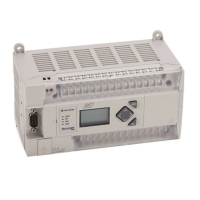
